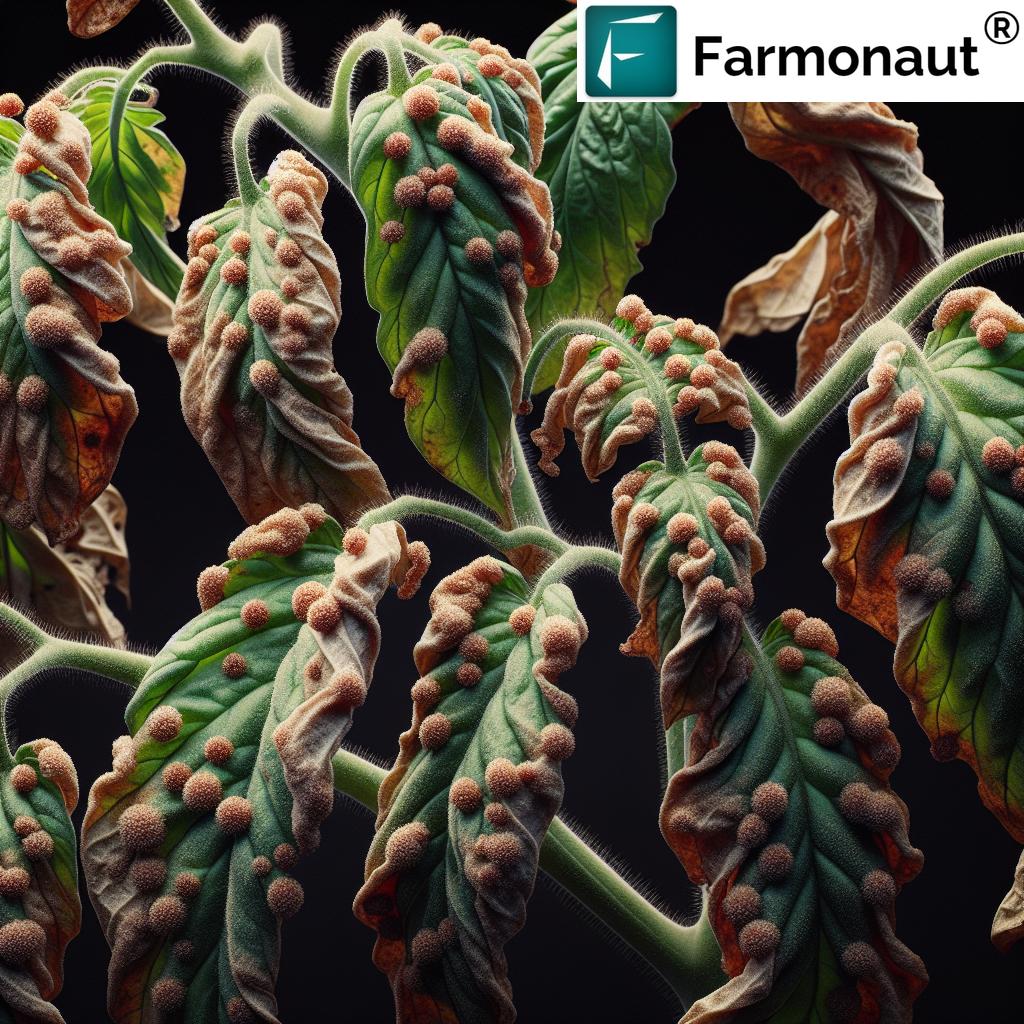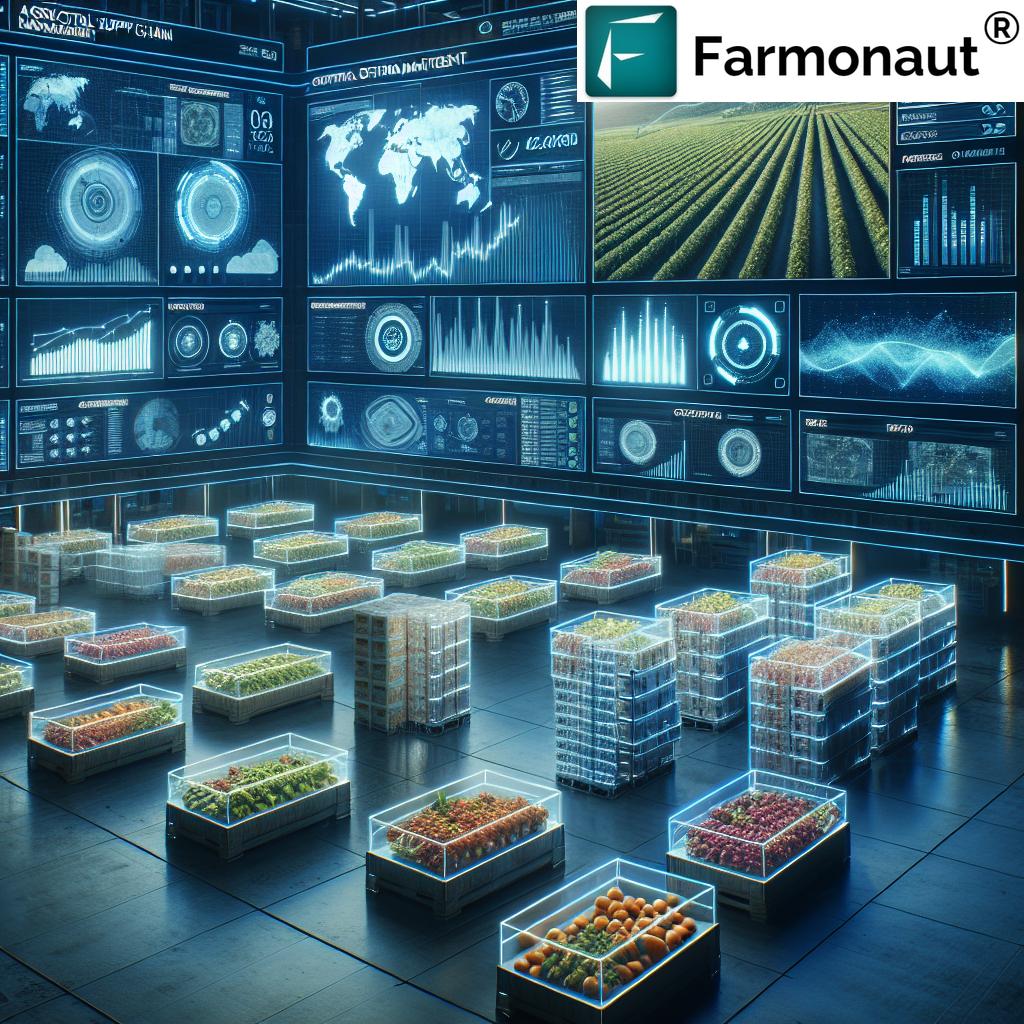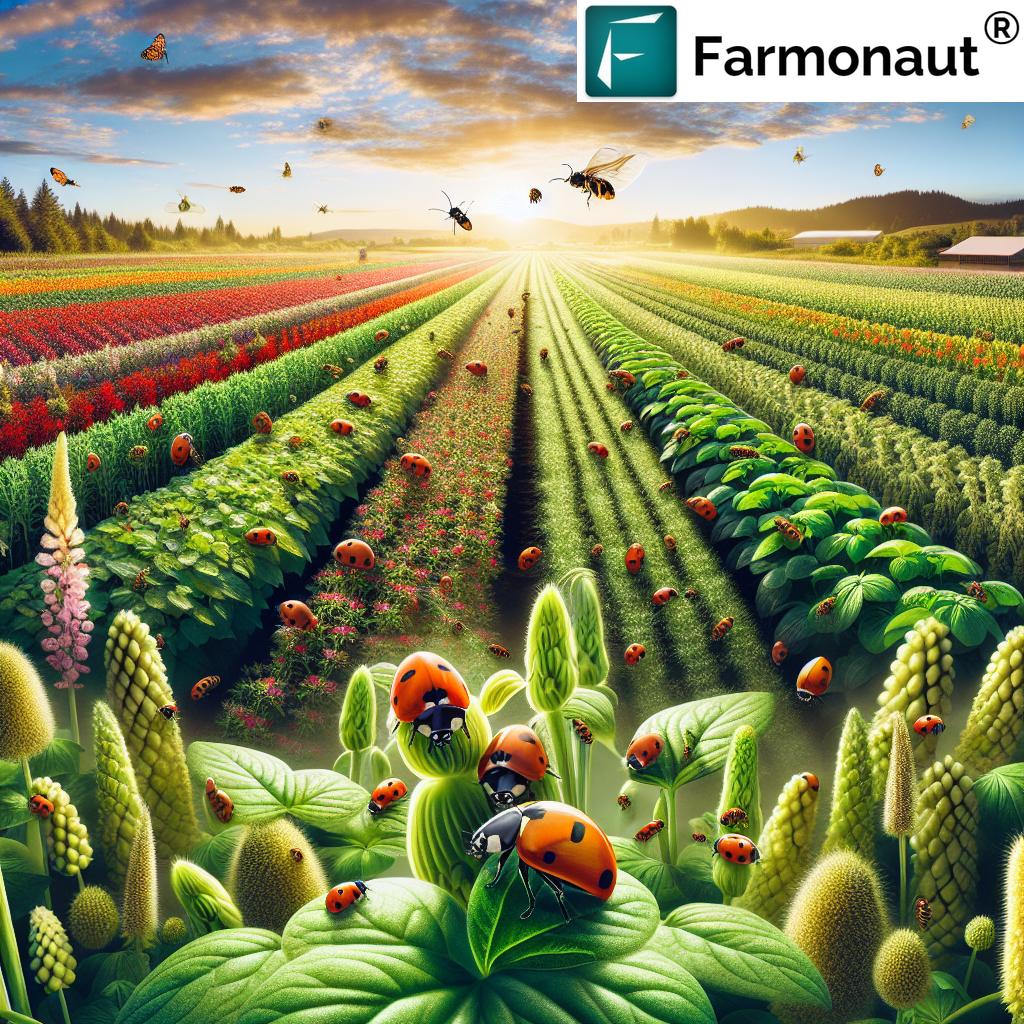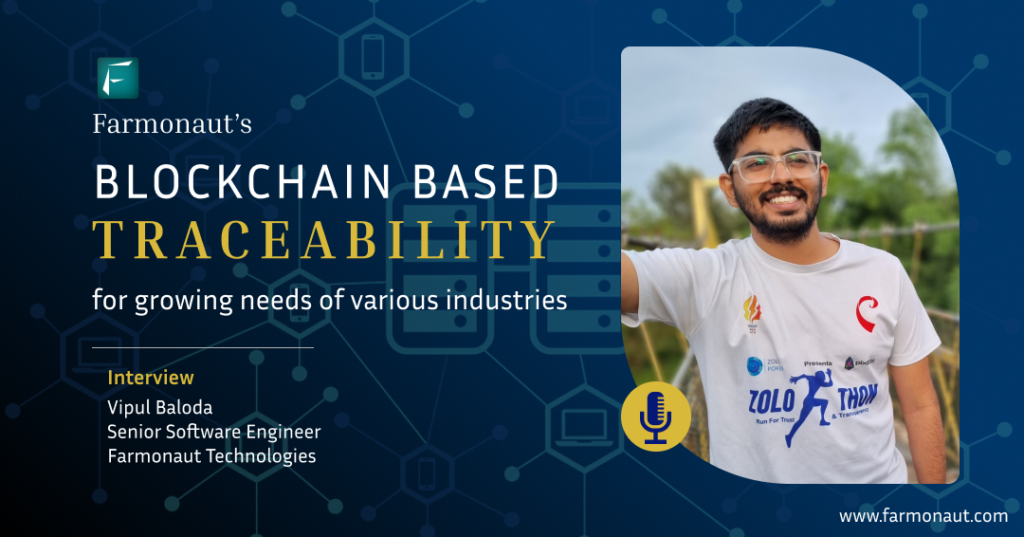New Types of Farming: 4 Sustainable Methods for 2025
Summary: An Overview of Key Types of Farming Relevant in 2025
As the world confronts increasing environmental challenges and a rapidly growing population, agriculture is evolving with innovations and diversified approaches in farming methods. Efficient resource use and sustainability have never been more critical. By understanding different types of farming and their relevance for 2025, farmers, policymakers, and stakeholders can optimize productivity while safeguarding natural ecosystems. This article comprehensively explores the most important categories of farming—including new types of farming, the 4 types of farming, 3 types of crop farming, types of forest farming, and types of crop farming by season and method—with a focus on sustainability, soil health, and biodiversity in contemporary agriculture.
Key Focus: New types of farming, 4 types of farming, 3 types of farming, types of forest farming, types of crop farming, sustainable agriculture, 2025
New Types of Farming in 2025: Innovations Shaping Tomorrow’s Agriculture
The landscape of farming in 2025 is being transformed by technological advancements and growing environmental imperatives. New types of farming not only boost efficiency and productivity but also prioritize sustainable resource use. These novel systems are essential for meeting modern demands in an industry confronting climate change, water scarcity, and urban expansion. Let’s review the most influential categories and their key methods.
1. Vertical Farming: Maximizing Space and Water Efficiency
Vertical farming is a method where crops are grown in stacked layers within controlled environments. Using advanced technologies such as LED lighting, hydroponics, and climate control, vertical systems maximize space and reduce water usage by up to 90% compared to traditional techniques. This approach is especially useful near urban areas, minimizing transportation emissions and enabling year-round production of vegetables and other crops.
- Implemented indoors, rooftops, or abandoned warehouses
- Using hydroponics and sometimes aeroponics (growing without soil, roots in nutrient mist)
- Significant water conservation; up to 95% less water needed
- Ideal for growing leafy vegetables, herbs, and some fruits
- Enables urban food security and reduces supply chain vulnerabilities
- Precision production without synthetic inputs
To further support sustainable vertical farming in 2025, satellite-driven monitoring solutions like those provided by Farmonaut (see large-scale farm management platform) are becoming indispensable. Our tools deliver spatial data on crop health and resource use, empowering growers to make data-driven decisions for maximum efficiency.
2. Aquaponics: Combining Fish and Plant Farming in a Symbiotic System
Aquaponics integrates aquaculture (raising fish) with hydroponics (soilless plant cultivation) in an integrated system. In these systems:
- Fish produce waste that contains nutrients beneficial to plants
- Plants absorb and filter these nutrients, which cleans the water for recirculation to the fish
- Reduces the need for synthetic fertilizers; the closed-loop system conserves water and space
- Supports local food production and diverse revenue streams (fish plus plants)
With ongoing innovations in system design and monitoring, aquaponics is highly resource-efficient and is scaling up for commercial and community use, contributing to both urban and rural food security.
3. Organic Farming: Emphasizing Health, Ecology, and Soil Regeneration
The popularity of organic farming is soaring as consumers seek safe, chemical-free food and markets demand higher ecological standards. Organic farming:
- Avoids synthetic fertilizers and pesticides by using natural inputs such as compost, green manure, and biological pest control
- Prioritizes soil health restoration by encouraging organic matter and natural cycles
- Encourages diversified crop rotations and biodiversity
Organic methods are relevant for small, medium, and even large-scale producers due to growing markets and premium prices for organic products. Real-time field and crop health monitoring through the Farmonaut App (see below to download or use) further supports data-driven and sustainable organic agriculture:
4. Regenerative Agriculture: Restoring Soil and Biodiversity for a Healthier Climate
Regenerative agriculture is far more than a buzzword—by 2025, it will be a critical approach for reversing soil degradation and increasing agricultural resilience. Core principles include:
- Minimizing soil disturbance through no-till or conservation tillage
- Emphasizing perennial plants, cover crops, and crop diversity
- Promoting animal integration (e.g., managed grazing) to close nutrient cycles
- Increasing soil organic carbon sequestration—potentially capturing up to 20% more carbon by 2025
- Boosting biodiversity above and below ground
Many regenerative practices synergize with innovative monitoring and blockchain traceability solutions such as Farmonaut’s carbon footprinting platform (learn more here) and product traceability tools, which are essential for measuring environmental impact and building trust in sustainable supply chains.
The Four Main Types of Farming Explained for Modern Agriculture
Understanding the 4 types of farming remains vital. By 2025, these categories help clarify the primary goals, resource use, and production techniques that farmers and stakeholders are choosing worldwide:
-
Subsistence Farming:
- Practiced by smallholders for self-sufficiency, i.e., feeding their own families or local communities
- Relies on traditional methods: manual labor, natural rainfall, low-tech tools, often using indigenous seed varieties
- Often found in developing regions; resilient but low-yielding
- Key for food sovereignty and local food security
-
Commercial Farming:
- Focused on large-scale crop production or livestock for sale in local and global markets
- Utilizes machinery, synthetic inputs (where allowed), genetically improved seeds, and advanced infrastructure
- Often optimized for maximum yield and efficiency—with new technologies enabling better resource management
-
Mixed Farming:
- Cultivates crops alongside livestock rearing
- Enhances efficiency through resource recycling (e.g., manure as fertilizer, crop residues as fodder)
- Diversifies income and reduces economic risk
- Especially suited to small and mid-size farms seeking sustainable diversity
-
Plantation Farming:
- Large estates growing cash crops like tea, coffee, oil palm, rubber, cocoa, and bananas
- Often vertically integrated for export markets and sometimes controversial due to monocropping and land use issues
- Increasingly adopting sustainable practices, remote monitoring, and traceability for market access
Want to optimize plantation management? Discover Farmonaut’s advisory and satellite insights solutions for crop and plantation management: click here.
Primary 3 Types of Crop Farming: Adaptation and Innovation in 2025
The 3 types of farming for crops (arable, horticulture, pastoral) are a foundation for modern production systems:
-
Arable Farming:
- Growing cereals, legumes, and vegetables on plowed land
- Relies on suitable soil and climate for each crop
- Modern arable farming integrates satellite monitoring, AI, and precision technologies, especially for large-scale fields (see Farmonaut’s large-scale farm management app)
-
Horticulture:
- Focuses on growing fruits, vegetables, ornamental and medicinal plants
- Requires intensive resource management, expertise, and labor
- Often leverages data-driven solutions to maximize yield and quality (e.g., Farmonaut’s carbon footprint monitoring)
-
Pastoral Farming:
- Primarily livestock-oriented (cattle, sheep, goats, etc.), but may blend grazing with dedicated fodder crop cultivation
- Focuses on sustainable land use; managed grazing supports both soil health and animal welfare
- Technological monitoring can improve pasture quality (see Farmonaut’s field monitoring API and satellite API)
Types of Forest Farming and Integration with Agriculture
Interest in forest farming methods is growing as stakeholders recognize the benefits of combining trees, crops, and often livestock to foster resilient ecosystems. The main types of forest farming serve both conservation and production goals:
1. Timber Production Plantations
- Planting and managing trees exclusively for wood, paper, and allied industries
- Careful selection of species (e.g., teak, eucalyptus, pine) allows managed harvest cycles and replanting
- Modern approach aims for sustainable certifications, higher productivity, and ecosystem restoration
2. Agroforestry Systems
- Combining trees, crops, and/or livestock on the same land
- Designs range from silvopasture and alley cropping to forest gardens
- Boosts biodiversity, enhances soil health, regulates water flow, and creates climate resilience
- Promotes long-term food security by diversifying outputs (food, timber, fodder, resins, medicinal plants)
3. Silvopastoral Systems
- Integrates trees, grazing livestock, and forage crops
- Livestock benefit from shade, improved nutrition, and reduced stress
- System supports carbon sequestration, soil restoration, and stable income
4. Non-Timber Forest Products (NTFPs) Cultivation
- Production and harvest of forest-based products without removing trees
- Examples: mushrooms, medicinal herbs, maple syrup, honey, nuts, resins, and aromatic plants
- Encourages conservation and alternative livelihoods
Well-integrated forest farming models can vastly increase climate resilience, biodiversity, and rural development, especially when paired with advanced monitoring tools (see Farmonaut’s crop, plantation, and forest advisory solutions: learn more here).
Comparative Table: 4 Sustainable Farming Methods for 2025
To help farmers, policymakers, and stakeholders quickly understand the strengths of various approaches, here is a comparative table of the 4 most promising sustainable farming methods for 2025:
| Method Name | Core Practices | Estimated Yield Improvement (%) | Estimated Soil Health Benefit | Biodiversity Impact | Resource Efficiency (Water/Energy Savings) | Scalability in 2025 |
|---|---|---|---|---|---|---|
| Agroforestry | Combining trees with crops and/or livestock; silvopasture, alley cropping | 10-25% | Major; increased organic matter and moisture retention | Up to 40% increase in species richness | 10-20% water savings; lower input needs | High in small/mid-scale, increasing large-scale uptake |
| Regenerative Agriculture | No-till/conservation tillage, cover crops, diverse rotations, managed grazing | 5-20% | 20%+ increase in soil carbon, structure, and water retention | High, above and below ground | 15-30% less water, cuts fertilizer/pesticide use | High, adaptable to most farming systems |
| Vertical Farming | Stacked layers indoors, hydroponics, LED lighting, controlled climate | 15-30% | Consistent, protected from external pressures | Moderate; not field wildlife, but higher microbiodiversity | Up to 95% water, 50%+ less land, energy-intensive but improving | Very high for urban/ peri-urban, scalable via tech |
| Conservation Tillage | Minimal soil disturbance, residue retention, contour farming | 5-10% | Up to 15% organic matter boost over 3-5 years | Mild-moderate increase | 5-15% water savings; less fuel use | Widely applicable globally |
Curious about how satellite technology can evaluate the success of different sustainable methods? Visit our carbon footprinting product page for insights on quantifying soil carbon and tracking sustainability in your region.
Types of Crop Farming by Season and Cultivation Methods
Region-specific types of crop farming are defined not just by what is grown but also by how and when. Here are the crucial distinctions for 2025:
Kharif and Rabi Crops: Seasonal Adaptation in South Asia
- Kharif Crops: Sown with onset of monsoon (June–July); harvested autumn (e.g. rice, maize, cotton, soybeans)
- Rabi Crops: Sown post-monsoon (October–November); harvested spring (wheat, barley, mustard)
- Double cropping, intercropping, and short-season varieties are increasingly common
Dryland Farming: Thriving in Arid Climates
- Relies on winter rainfall or stored soil moisture
- Drought tolerance, soil mulching, and water harvesting methods
- Key for cereals, pulses, and some oilseeds in water-scarce zones
Irrigated Farming: Increasing Production through Managed Water
- Intensive use of irrigation (canal, drip, sprinkler)
- Supports multiple crops per year and high yields
- Growing adoption of precision irrigation to enhance efficiency and avoid waterlogging or salinization concerns
For precision monitoring and crop resource planning, explore our Farmonaut fleet and resource management tools and satellite crop loan and insurance verification solutions.
How Farmonaut Empowers Sustainable Farming and Forest Farming in 2025
As farming practices continue to evolve, leveraging technology is essential for achieving true sustainability. We at Farmonaut are committed to accelerating sustainable agriculture and forest farming through:
- Satellite-Based Crop Monitoring: Real-time NDVI and soil health analysis enables optimized input use, yield estimation, and resource management for all types of crops and farming systems.
- AI Advisory: Jeevn AI provides targeted, field-level strategies to address pest, water, and health challenges, supporting more efficient farming in 2025.
- Blockchain-Based Traceability: Our platform documents the origin, movement, and ecological status of agricultural products—crucial for markets demanding transparency and authenticity.
- Fleet and Resource Management: Reduce operational costs by tracking and optimizing vehicle, equipment, and labor utilization across large-scale and mixed farming systems.
- Environmental Impact Monitoring: Our environmental modules provide carbon footprint tracking, helping users demonstrate sustainability and comply with future regulations.
Discover the benefits of satellite-based traceability for sustainable supply chains on our product traceability page.
FAQs on New Types of Farming and Sustainable Methods in 2025
What are the new types of farming emerging by 2025?
New types of farming include vertical farming, aquaponics, organic systems, and regenerative agriculture, all leveraging modern technology, resource efficiency, and biodiversity-focused practices.
How do the 4 types of farming differ from one another?
Subsistence farming sustains households. Commercial farming targets large-scale markets. Mixed farming blends crops with livestock. Plantation farming specializes in one or a few high-value cash crops for export.
What are the 3 types of farming for crop cultivation?
Arable (field crops), horticulture (fruits, vegetables, flowers), and pastoral (livestock, with some crops) farming differentiate methods by focus and resource use.
Why is forest farming becoming more relevant for sustainable agriculture?
Forest farming types—including agroforestry and silvopastoral systems—increase biodiversity, prevent erosion, enhance carbon capture, and diversify income while meeting ecological goals.
Which sustainable farming method is best for climate resilience in 2025?
Regenerative agriculture and agroforestry offer excellent soil health, biodiversity, and carbon sequestration, but the optimal strategy depends on local climate, land, and available resources.
How does Farmonaut support new types of farming and sustainability?
We offer real-time crop and resource monitoring via satellite, AI-powered advice, blockchain traceability, and environmental tracking—democratizing access to tech for all farming types and sizes.
Where can I find APIs and developer tools for integrating satellite agriculture data?
For APIs and integration with farm management systems, visit our API Portal and API Developer Docs.
Conclusion: Shaping Food Security and Sustainability in 2025 and Beyond
By 2025, the diversity of farming types—from new, high-tech vertical systems to traditional, resilient methods—reflects the complexity and promise of contemporary food production. Innovations in vertical farming, aquaponics, and regenerative agriculture are proving vital to soil health, resource efficiency, and climate resilience, while advances in forest farming and agroforestry offer biodiversity and ecosystem benefits.
Through comprehensive understanding and timely adoption of sustainable practices—along with **data-driven solutions** like those in the Farmonaut platform—farmers, policymakers, and stakeholders are empowered to optimize productivity while safeguarding natural resources and ecosystems. The path to future-ready, resilient agriculture lies in embracing the nuanced, evolving world of sustainable farming systems and taking decisive action for a healthy planet and food-secure society.
Ready to step into the future of farming? Download the Farmonaut App or learn more about our data-driven solutions for every type of farm and forest system.
For large-scale farm management, crop plantation, forest advisory or crop insurance verification, see our digital platform or visit Farmonaut Agro Admin App.
API access and documentation for developers and agri-tech businesses: API Portal | API Docs












